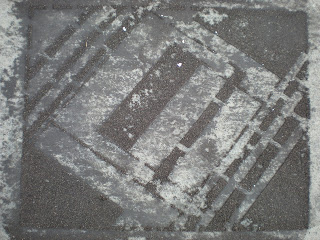












 In our discussions about alternate audiences for art, one thing we've considered is the idea that "social space" can be an intimate, specific gesture or a broader one aimed at a more generalized audience. As Justine, Tim, and several others have figured out as their projects develop, creating work for "the public" can be tricky: just because an audience has visual access to the work doesn't mean that they will feel any less alienated or irritated by it than work in a gallery space. They may, in fact, find it more so.
In our discussions about alternate audiences for art, one thing we've considered is the idea that "social space" can be an intimate, specific gesture or a broader one aimed at a more generalized audience. As Justine, Tim, and several others have figured out as their projects develop, creating work for "the public" can be tricky: just because an audience has visual access to the work doesn't mean that they will feel any less alienated or irritated by it than work in a gallery space. They may, in fact, find it more so. For those of you interested in street art, One Person's Vandalism is Another's Art defines some differences between traditional graffiti and more recent trends in street art, as well as some of the ways that the language of street art is being coopted by advertisers and even political campaigns... and more interestingly, the backlash against street art (and against street art-esque advertising) by other artists, leading back again to similar questions of audience. Should artists keep their art "to themselves," within sanctioned venues? Are there other, perhaps more interesting ways to engage the boundaries of place/space/audience? There are certainly worthwhile arguments both for and against this stance, and I'd be interested to hear your opinions.
For those of you interested in street art, One Person's Vandalism is Another's Art defines some differences between traditional graffiti and more recent trends in street art, as well as some of the ways that the language of street art is being coopted by advertisers and even political campaigns... and more interestingly, the backlash against street art (and against street art-esque advertising) by other artists, leading back again to similar questions of audience. Should artists keep their art "to themselves," within sanctioned venues? Are there other, perhaps more interesting ways to engage the boundaries of place/space/audience? There are certainly worthwhile arguments both for and against this stance, and I'd be interested to hear your opinions.

Anna Callahan is a community-based artist who focuses on creating art in public spaces. Her work evolves from informal interviews she has with strangers that she encounters in a community—such as a university, library, and city transit system. The conversations are centered around a particular topic respective to those public spaces. She records all conversations and creates visual and aural installations, which includes printed materials and listening stations to invite people to listen to someone whom they would otherwise never meet.


